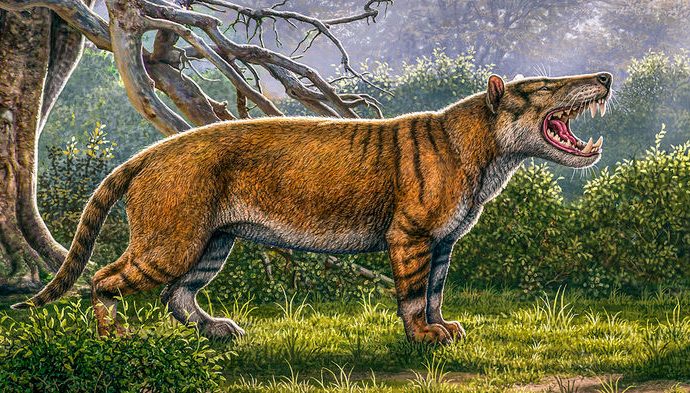When paleontologists dug up the bones of Africa’s largest carnivore in the early 1980s, they had no idea what they had found.
Source: Science Magazine
So many other fossils littered the dig site, at Meswa Bridge in western Kenya, that the giant bones were just one more item to be cataloged. So, they stuck them in a drawer in the Nairobi National Museum, where they remained for nearly 4 decades.
Then a new team of researchers showed up. They pulled open the drawer by chance and found “canines the size of bananas,” says carnivore paleontologist Matt Borths at Duke University in Durham, North Carolina. The teeth—with molars 6 centimeters long and canines 10 centimeters long—were just the beginning. Attached to them was an enormous jaw and other bone fragments dated to 23 million years ago. The researchers estimate the 1.2-meter-tall creature (artist’s rendition above) would have weighed 1500 kilograms and measured 2.4 meters from snout to tail—making it bigger than a polar bear and one of the largest mammalian meat eaters on record, the researchers report today in the Journal of Vertebrate Paleontology.
Named Simbakubwa kutokaafrika, which means “big lion from Africa” in Swahili, the apex predator would have played a similar role in the region’s ecosystem as today’s lions, whose ancestors did not arrive in Africa until 3.7 million years later. Prior to that, Simbakubwa was one of the only land-dwelling carnivores in Africa, part of a group of giant extinct mammals called hyaenodonts. But whereas modern lions have only one pair of specialized, meat-slicing teeth on either side of their jaws, Simbakubwa had three, making it a formidable enemy.
The researchers say Simbakubwa’s teeth are in almost pristine condition, helping them sort out its relationship to the other giant carnivores in its family. But, they say, they still have much to learn about why these giant meat eaters went extinct—and what they can teach us about the risks to modern carnivores.

































Leave a Comment
You must be logged in to post a comment.